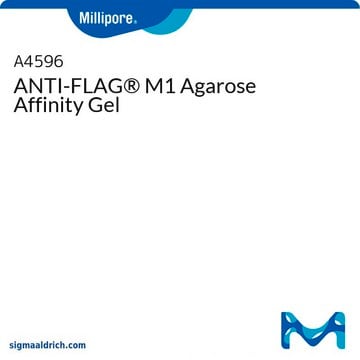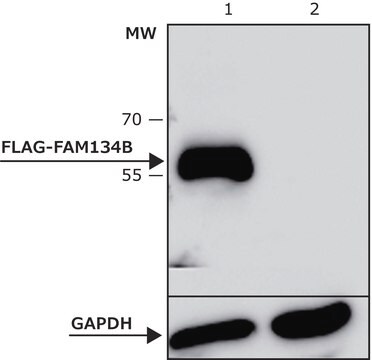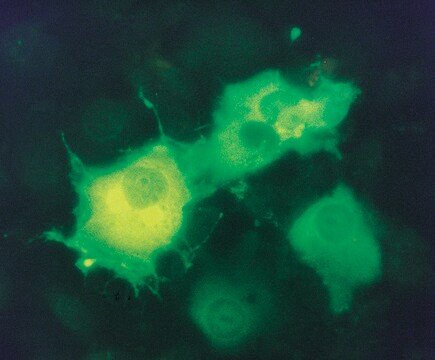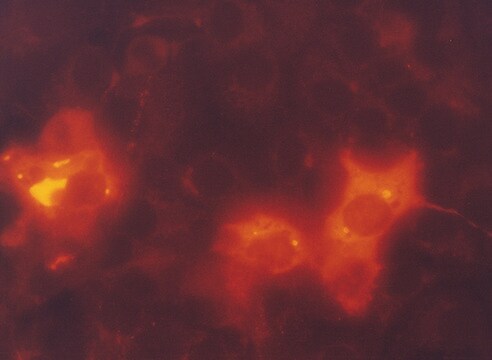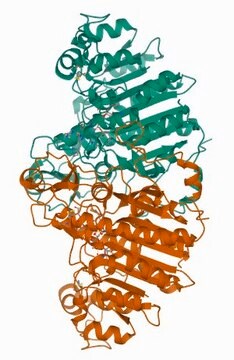F3040
Monoclonal ANTI-FLAG® M1 antibody
clone M1, purified immunoglobulin, buffered aqueous solution
Synonym(s):
Anti-ddddk, Anti-dykddddk
About This Item
Recommended Products
biological source
(Bioreactor)
Quality Level
conjugate
unconjugated
antibody form
purified immunoglobulin
antibody product type
primary antibodies
clone
M1, monoclonal
form
buffered aqueous solution
purified by
using Protein A
species reactivity
all
concentration
2-5 mg/mL
technique(s)
western blot: 10 μg/mL
immunogen sequence
DYKDDDDK
shipped in
dry ice
storage temp.
−20°C
General description
Method of purification - Protein A
Immunogen
Application
Applications in which this antibody has been used successfully, and the associated peer-reviewed papers, are given below.
Chromatin immunoprecipitation (1 paper)
Immunofluorescence (1 paper)
Learn more product details in our FLAG® applications portal.
Biochem/physiol Actions
Physical form
Preparation Note
Legal Information
Not finding the right product?
Try our Product Selector Tool.
Storage Class Code
10 - Combustible liquids
WGK
WGK 1
Flash Point(F)
Not applicable
Flash Point(C)
Not applicable
Certificates of Analysis (COA)
Search for Certificates of Analysis (COA) by entering the products Lot/Batch Number. Lot and Batch Numbers can be found on a product’s label following the words ‘Lot’ or ‘Batch’.
Already Own This Product?
Find documentation for the products that you have recently purchased in the Document Library.
Customers Also Viewed
Our team of scientists has experience in all areas of research including Life Science, Material Science, Chemical Synthesis, Chromatography, Analytical and many others.
Contact Technical Service


